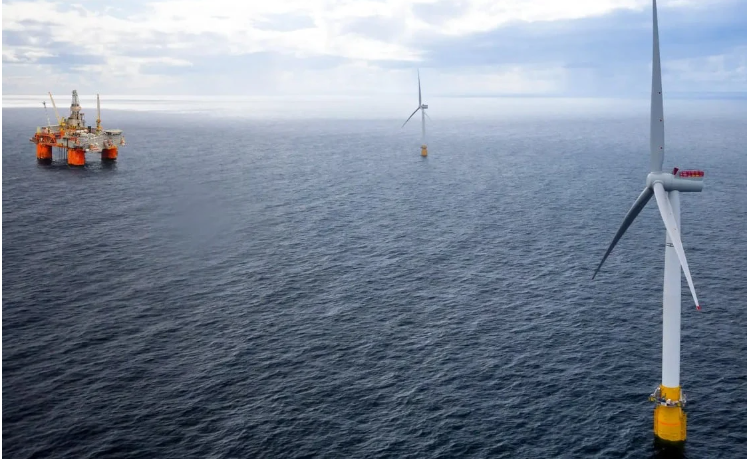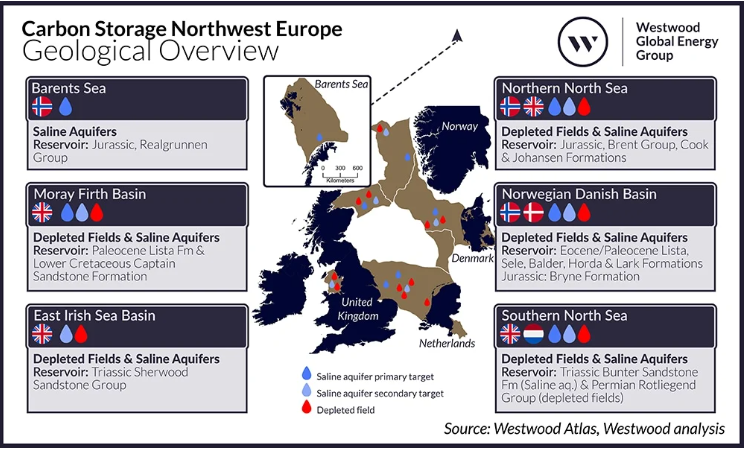
Stuart Leitch, Westwood’s New Energies Research Manager, provides a roundup of energy transition themes in the UK and Norway, following a recent webinar titled UK and Norway – The role of exploration in the Energy Transition, which was hosted by the firm’s Atlas and New Energies teams.
The webinar offered a review of exploration activity and performance in the UK and Norway over the last decade along with an outlook for exploration in 2023, and provided insights into the energy transition tools being used, such as electrification of oil and gas assets, offshore wind, carbon capture and storage (CCS), and hydrogen as primary drivers of emission reductions.

With the global energy crisis pushing the security of supply to the top of the priority list, many wonder whether the pace of the transition to low-carbon and renewable sources has slowed down or sped up. Westwood sheds more light on this by pointing out that despite some rebalancing in all aspects of the energy trilemma, the energy transition is continuing at pace.
According to Leitch, the question that needs to be answered is whether enough is being done, and if the right balance is being struck across all elements of the trilemma.
Curbing oil & gas emissions
Both Norway and the UK have put the wheels into motion to cut greenhouse gas emissions from their offshore oil and gas production facilities and this has led to reductions in recent years. Norway already has a long history of employing offshore electrification for oil and gas production, which has maintained the country’s downward trend in absolute emissions.
There were six partially or fully electrified hubs in 2022, with some of these facilities producing at less than 1 kgCO₂/boe. With further electrification plans in the pipeline, Westwood forecasts that Norway will keep its downward trend in absolute emissions in future years.
On the other hand, Leitch outlines that the UK has achieved a reduction in absolute emissions from offshore oil and gas assets from 13 million tonnes of CO2 in 2018 to 10 million tonnes of CO2 in 2021. Despite some improvement in the emissions performance, Westwood’s analysis found that the reduction is partly due to reduced offshore production and hub closures, thus, maintaining the downward trend while balancing the demand for increased production poses a challenge for the UK, which will need to focus on higher capex solutions, such as electrification, to continue decarbonising its offshore industry.
Offshore wind lending a helping hand to oil & gas
Leitch explains that power from shore is proving to be “both a challenging and expensive solution” in the UK, thus, the country has turned to accelerating the integration of offshore wind with oil and gas assets through the introduction of the Innovation and Targeted Oil & Gas (INTOG) round, which was introduced in 2022. This aims to encourage further innovation in the offshore wind sector and create an opportunity for offshore wind to decarbonise oil and gas assets while the water depths and distances from shore lend themselves best to floating wind.
The INTOG leasing round results were announced at the end of March 2023 and Crown Estate Scotland picked 13 out of a total of 19 applications with a combined capacity of around 5.5 GW. Leitch emphasises that only a few platforms will benefit even though the process has the potential to support emission reductions from oil and gas assets in the UK.
“Assuming a wind farm is operational in 2027 and considering the minimum requirement of five years of demand, hubs set to cease production in that time are unlikely to benefit from INTOG and will need to consider alternative decarbonisation solutions,” underlined Leitch.
Meanwhile, Norway has been a busy bee with the Hywind Tampen offshore wind farm in Norway – connected to the Snorre and Gullfaks hubs – recently starting to partially power oil and gas installations at Snorre, following first power to the Gullfaks A platform in November 2022. It is due to come fully online shortly.
The Trollvind project in Norway – a 1 GW floating offshore wind farm to electrify the Troll and Oseberg facilities through an onshore connection point – was recently placed on hold indefinitely due to rising costs, making it commercially unviable.
CCS on the rise
Based on Westwood’s data, Europe has an estimated 500 GT of theoretical capacity for CO₂ storage in both saline aquifers and depleted hydrocarbon fields, with a significant portion of this offshore UK and Norway. As a result, Leitch underlines that both countries have significantly increased carbon capture and storage activities in recent years with a sharp rise in the award of carbon storage licences.
While Norway continues to offer acreage, the UK recently announced preliminary results of its first carbon storage licensing round with the offer of 20 carbon storage licences to 12 companies. Leitch believes that the large E&P companies are likely to be the most successful in the round, with smaller companies gaining access through partnerships.